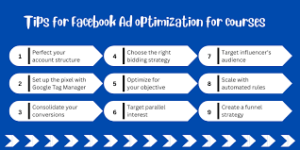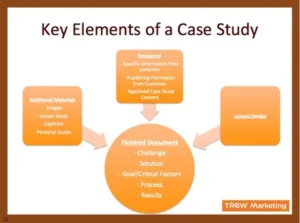Introduction of Facebook Ads retargeting tips for online courses
Retargeting with Facebook Ads is a powerful strategy for re-engaging potential customers who have shown interest in your online courses but haven’t converted. This guide breaks down the problem of ineffective retargeting, identifies common causes, outlines consequences, and provides a step-by-step solution with real-world examples, tools, and strategies to maximize conversions. It also includes tips to prevent future issues and a clear call to action.
Problem Breakdown: Ineffective Facebook Ads Retargeting for Online Courses
Retargeting involves showing ads to users who have interacted with your online course website, social media, or ads but didn’t enroll. Ineffective retargeting leads to low conversion rates, wasted ad spend, and missed opportunities to sell high-value courses. The problem can be broken into smaller components:
-
Poor Audience Segmentation: Failing to group users based on their behavior (e.g., visited course page vs. added to cart).
-
Irrelevant Ad Creatives: Ads that don’t address the user’s specific stage in the buying journey (e.g., awareness vs. decision).
-
Improper Pixel Setup: Incorrect or missing Meta Pixel tracking, leading to inaccurate audience data.
-
Lack of Ad Frequency Control: Overloading users with too many ads, causing ad fatigue, or under-serving ads, reducing visibility.
-
No Clear Call-to-Action (CTA): Ads lacking compelling incentives or urgency to enroll in the course.
Common Causes
-
Technical Errors: Incorrect Meta Pixel installation or events not firing properly.
-
Lack of Strategy: Not tailoring ads to user intent or course-specific pain points (e.g., career advancement, skill-building).
-
Budget Misallocation: Spending too much on broad audiences instead of high-intent retargeting groups.
-
Content Misalignment: Using generic ad copy or visuals that don’t resonate with the online course audience.
-
Neglecting Testing: Failing to A/B test ad variations to identify what drives enrollments.
Consequences of Not Addressing the Issue
-
Wasted Budget: High ad spend with low return on ad spend (ROAS), straining marketing budgets.
-
Lost Revenue: Missed conversions from users who were close to enrolling but weren’t re-engaged effectively.
-
Brand Fatigue: Overexposure to repetitive or irrelevant ads can annoy potential customers, harming brand perception.
-
Competitive Disadvantage: Competitors with optimized retargeting campaigns capture your audience, reducing market share.
-
Lower Course Enrollment: Fewer students enrolling leads to reduced revenue and limited course scalability.
Step-by-Step Solution: Optimizing Facebook Ads Retargeting for Online Courses

Follow these actionable steps to create effective retargeting campaigns for your online courses, using Meta Ads Manager, strategic audience segmentation, and compelling creatives.
Step 1: Set Up and Verify Meta Pixel
The Meta Pixel tracks user actions on your website, enabling precise retargeting.
-
Action: Log in to Meta Ads Manager, go to Events Manager, and create a new Pixel. Copy the Pixel code and add it to your website’s header (use tools like Google Tag Manager or WordPress plugins like PixelYourSite for ease).
-
Verify: Use the Meta Pixel Helper Chrome extension to confirm the Pixel is firing correctly for key events (e.g., PageView, AddToCart, Purchase).
-
Set Up Events: Define custom events like “ViewCoursePage” or “StartCheckout” using the Event Setup Tool or manual code. For online courses, track actions like watching a course preview video or downloading a free resource.
-
Tools: Meta Ads Manager (https://www.facebook.com/business/tools/ads-manager), Meta Pixel Helper, and Google Tag Manager.
Step 2: Create Segmented Retargeting Audiences
Segment users based on their behavior to deliver relevant ads.
-
Action:
-
In Ads Manager, go to Audiences > Create Audience > Custom Audience.
-
Create audiences like
-
Website Visitors (Past 30 Days): Users who visited any course page.
-
Course Page Visitors: Users who viewed specific course landing pages (e.g., “Python for Beginners”).
-
Engaged with Video: Users who watched 50%+ of a course preview video.
-
Abandoned Cart: Users who added a course to cart but didn’t purchase.
-
-
Use time windows (e.g., 7, 14, or 30 days) based on your sales cycle (shorter for urgency-driven courses, longer for high-ticket courses).
-
-
Tip: Exclude users who already purchased to avoid irrelevant ads (create an audience for “Purchase” event and exclude it).
-
Tools: Meta Ads Manager, website analytics (e.g., Google Analytics for cross-referencing).
Step 3: Craft Compelling Ad Creatives
Design ads that address user pain points and highlight course benefits.
-
Action:
-
Ad Formats: Use carousel ads to showcase multiple course modules, video ads for testimonials or course previews, or single image ads with bold visuals.
-
Copywriting:
-
For Course Page Visitors: “Ready to master [skill]? Enroll in [Course Name] and start today! Limited spots available.”
-
For Abandoned Cart: “Don’t miss out! Complete your [Course Name] enrollment and get [discount/free bonus] by [deadline].”
-
-
Visuals: Use high-quality images of students learning, course dashboards, or instructor-led sessions. Tools like Canva (https://www.canva.com) or Adobe Express can help.
-
CTA: Include urgent, action-oriented CTAs like “Enroll Now,” “Claim Your Spot,” or “Get 20% Off Today.”
-
-
Tip: Address objections (e.g., “No prior experience needed” or “Learn at your own pace”) to reduce hesitation.
-
Tools: Canva, Adobe Express, and Meta Ads Library (https://www.facebook.com/ads/library) for inspiration.
Step 4: Set Up Retargeting Campaigns
Launch campaigns tailored to each audience segment.
-
Action:
-
In Ads Manager, create a new campaign with the Conversions objective, selecting “Purchase” or “Lead” as the conversion event.
-
Assign budgets (e.g., $10–$50/day per audience, depending on scale) and use Automatic Placements to maximize reach across Facebook, Instagram, and Messenger.
-
Create ad sets for each audience (e.g., “Course Page Visitors” vs. “Abandoned Cart”) with tailored ads.
-
Set ad frequency caps (e.g., 2–3 impressions per user every 7 days) to avoid fatigue.
-
-
Bidding: Use cost cap or lowest cost bidding to optimize for conversions within budget.
-
Tools: Meta Ads Manager and budgeting tools like QuickBooks for tracking ad spend.
Step 5: A/B Test and Optimize
Test ad variations to identify top performers.
-
Action:
-
Test variables like headlines, visuals, CTAs, or discounts (e.g., “10% Off” vs. “Free Bonus Module”).
-
Run A/B tests in Ads Manager by creating multiple ad sets with one variable changed.
-
Monitor metrics like click-through rate (CTR), cost per click (CPC), and ROAS in the Ads Reporting tab.
-
Scale winning ads by increasing budget and pause underperforming ones.
-
-
Tools: Meta Ads Manager and analytics platforms like Google Data Studio for visualizing performance.
Step 6: Monitor and Refine
Continuously track performance to ensure long-term success.
-
Action:
-
Check Events Manager weekly to ensure Pixel data is accurate.
-
Review audience overlap in Audiences to avoid competing ads.
-
Refresh creatives every 2–4 weeks to prevent ad fatigue.
-
Use Meta Attribution to understand which ads drive enrollments.
-
-
Tools: Meta Ads Manager, Meta Attribution, and scheduling tools like Trello for campaign planning.
Real-World Example: Case Study

Client: SkillUp Academy, an online platform offering digital marketing courses.
Problem: Low enrollment rates despite high website traffic (5,000 monthly visitors).
Solution:
-
Pixel Setup: Installed Meta Pixel and set up events for “ViewCoursePage,” “AddToCart,” and “Purchase.”
-
Audiences: Created three audiences:
-
Visitors to course pages (30 days).
-
Users who watched 75% of a course preview video.
-
Abandoned cart users (7 days).
-
-
Ads: Launched carousel ads showcasing course modules for course page visitors, video testimonial ads for video engagers, and discount-focused ads (15% off) for abandoned cart users.
-
Results:
-
CTR increased from 1.2% to 3.8%.
-
Cost per enrollment dropped from $45 to $18.
-
Enrollments rose by 120% in 30 days, with a ROAS of 4.5x.
-
-
Tools Used: Meta Ads Manager, Canva for creatives, and Google Tag Manager for Pixel setup.
Preventing Future Issues
-
Regular Pixel Audits: Use Meta Pixel Helper monthly to ensure accurate tracking.
-
Audience Refresh: Update custom audiences every 30–60 days to include new user behaviors.
-
Creative Rotation: Introduce new ad visuals and copy every 2–3 weeks to maintain engagement.
-
Budget Planning: Allocate 20–30% of the ad budget to retargeting for consistent high-ROAS campaigns.
-
Upsell Opportunities: Retarget enrolled students with advanced courses or certifications to maximize lifetime value.
Next Steps and Call to Action
-
Today: Set up or audit your Meta Pixel using Events Manager and verify with Meta Pixel Helper.
-
This Week: Create at least two custom audiences (e.g., course page visitors and abandoned cart) and launch a small-budget retargeting campaign ($10–$20/day).
-
This Month: A/B test ad creatives and monitor performance in Ads Manager. Scale winning ads and refine audiences.
-
Act Now: Log in to Meta Ads Manager (https://www.facebook.com/business/tools/ads-manager) and start building your retargeting campaign. Don’t let potential students slip away—retarget effectively to boost enrollments and grow your online course business today!

1 thought on “Facebook Ads retargeting tips for online courses”